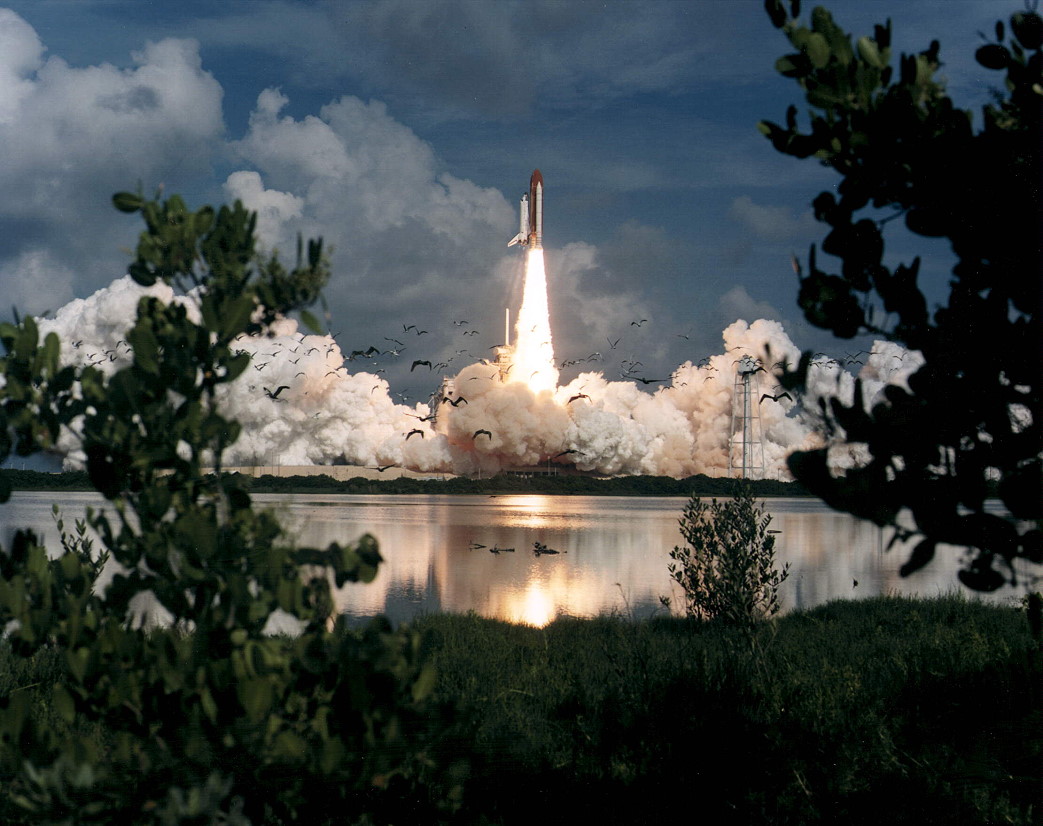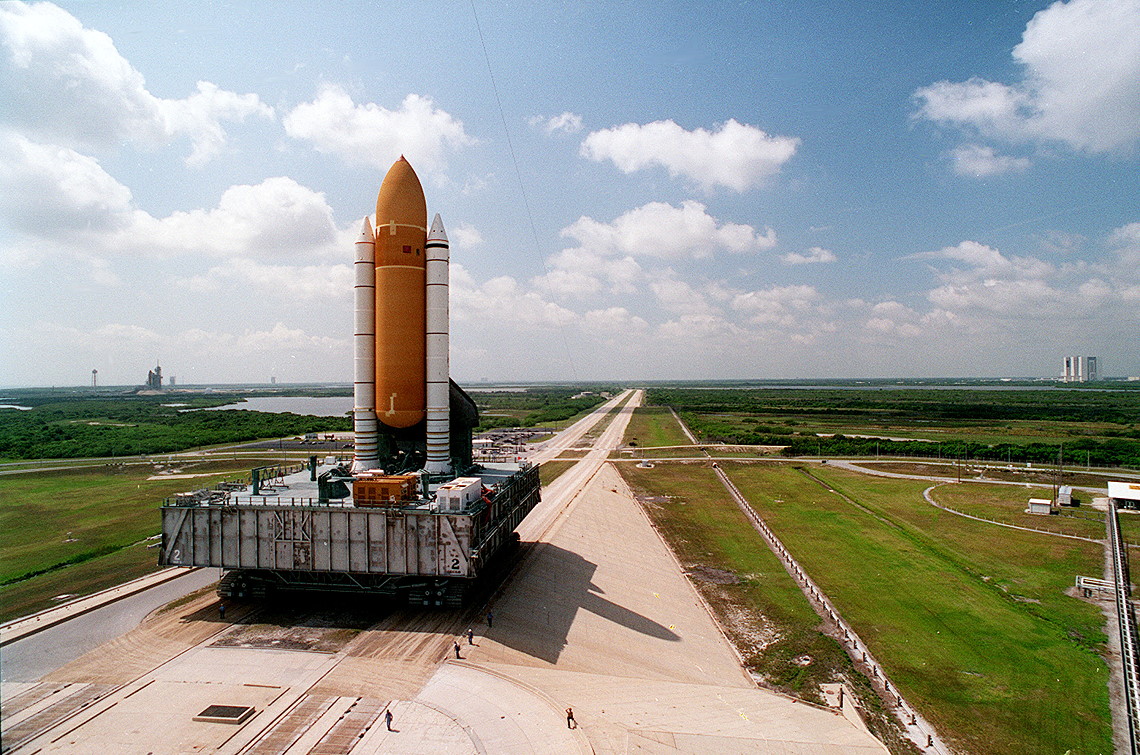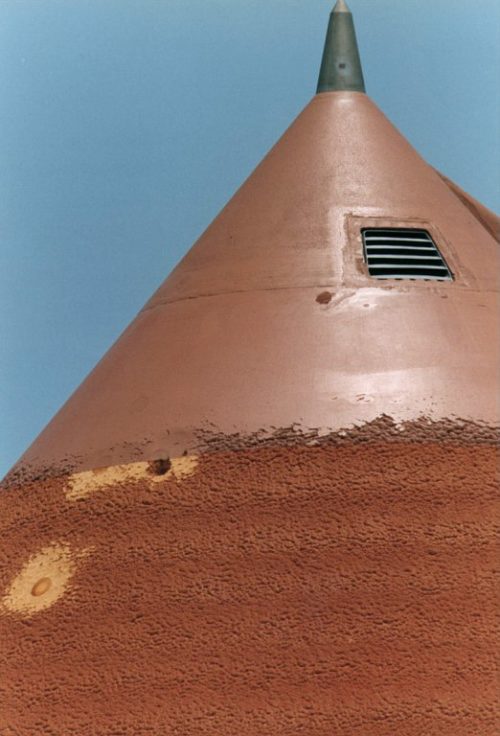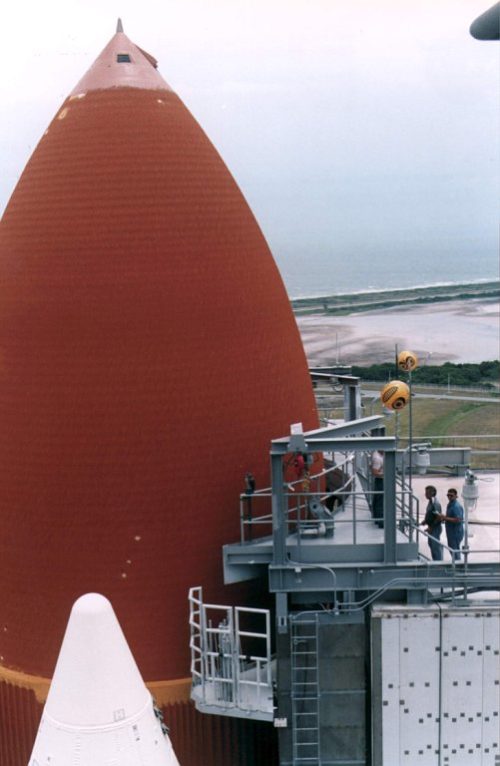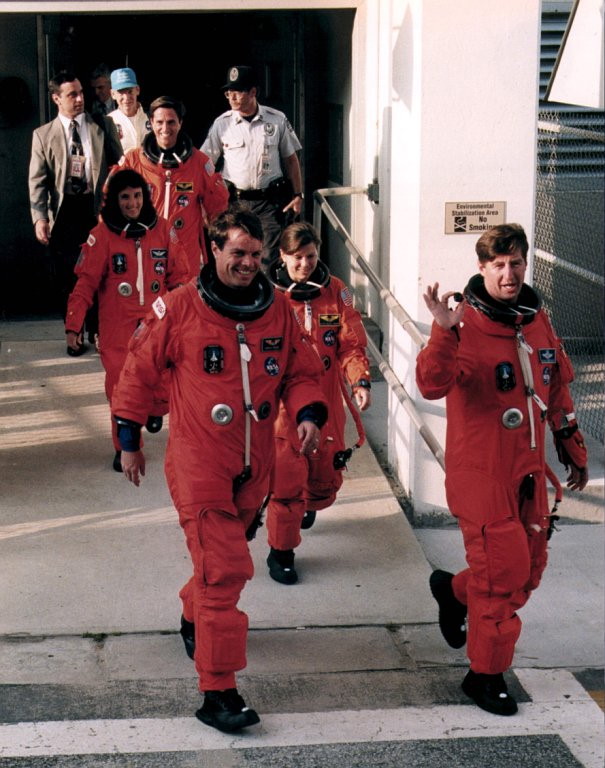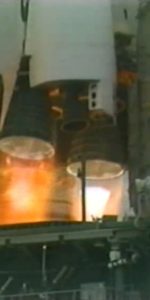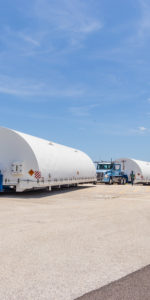Twenty-five years ago today, one of the shuttle program’s most unsung yet vital missions got underway with the liftoff of Discovery and her STS-70 crew. Having already had their launch thwarted by the actions of pesky Northern Flicker woodpeckers, Commander Tom Henricks, Pilot Kevin Kregel and Mission Specialists Nancy Currie, Mary Ellen Weber and Don Thomas also missed out on the added plum of becoming the United States’ 100th human spaceflight. Yet the nine days of STS-70, which began on 13 July 1995, would secure their own raft of “firsts”. Discovery would fly the first mission with upgraded Space Shuttle Main Engines (SSMEs), communicate with a newly refurbished Mission Control Center (MCC) and record the shortest interval between any two shuttle flights. And almost all of them—with the exception of New Yorker Kregel—hailed from Ohio, earning themselves the moniker of “Buckeye Crew”.
Originally scheduled to launch early in June, it was the antics of the woodpeckers which ruined STS-70’s chance of being the 100th U.S. human spaceflight since the pioneering voyage of Al Shepard aboard Freedom 7, three decades earlier. Repairs to the External Tank (ET) resulted in the high-priority first shuttle-Mir docking mission, STS-71, leapfrogging Henricks’ crew and seizing the title. When STS-71 landed on 7 July and STS-70 rose from Pad 39B at the Kennedy Space Center (KSC) in Florida at 9:41 a.m. EDT on 13 July, a new record of only six days was set between two shuttle missions. It remains a landing-to-launch achievement which was never again bettered in the program.
The five astronauts awoke early that morning, 25 years ago, and showered, breakfasted and donned their orange launch and entry suits, before departing the Operations & Checkout Building for the pad. Countdown operations proceeded with exceptional smoothness, albeit for a slight pause at T-31 seconds—just prior to Autosequence Start—when fluctuations were noted in the ET’s automatic gain control range safety system receiver. Booster Range Safety Engineer Tod Gracom, sitting in the Launch Control Center (LCC), called a minute-long hold whilst the issue was addressed and resolved.
“Ten, nine, eight, seven, six, five…Main Engine ignition,” came the call from NASA announcer George Diller as the SSMEs roared to life and blazed with fury. “Four, three, two, one…and liftoff of Space Shuttle Discovery to complete NASA’s constellation of tracking stations in the sky!”
Liftoff came at 9:41 a.m. EDT and Discovery powered into a crystal-clear Florida sky, under the combined impulse of her twin Solid Rocket Boosters (SRBs) and a mix of old and new main engines. Although two of the three SSMEs for STS-70 were of the older variety, the third—Engine No. 2036—was the first of the “Block I” design, containing numerous safety and reliability improvements.
These included a new Alternate High Pressure Oxidizer Turbopump (APHOT), whose casting process of fabrication helped to eliminate all but six of the 300 welds in older engines. The Block I also featured a two-duct powerhead to improve fluid flow through the engine to decrease pressures and loads and a single-coil heat exchanger. Overall, the new engine reduced the need for regular wear-and-tear maintenance inspections. A full set of Block Is would fly aboard Endeavour for STS-77 in May 1996 and further iterations of the engine would gradually enter service during the remainder of the program.
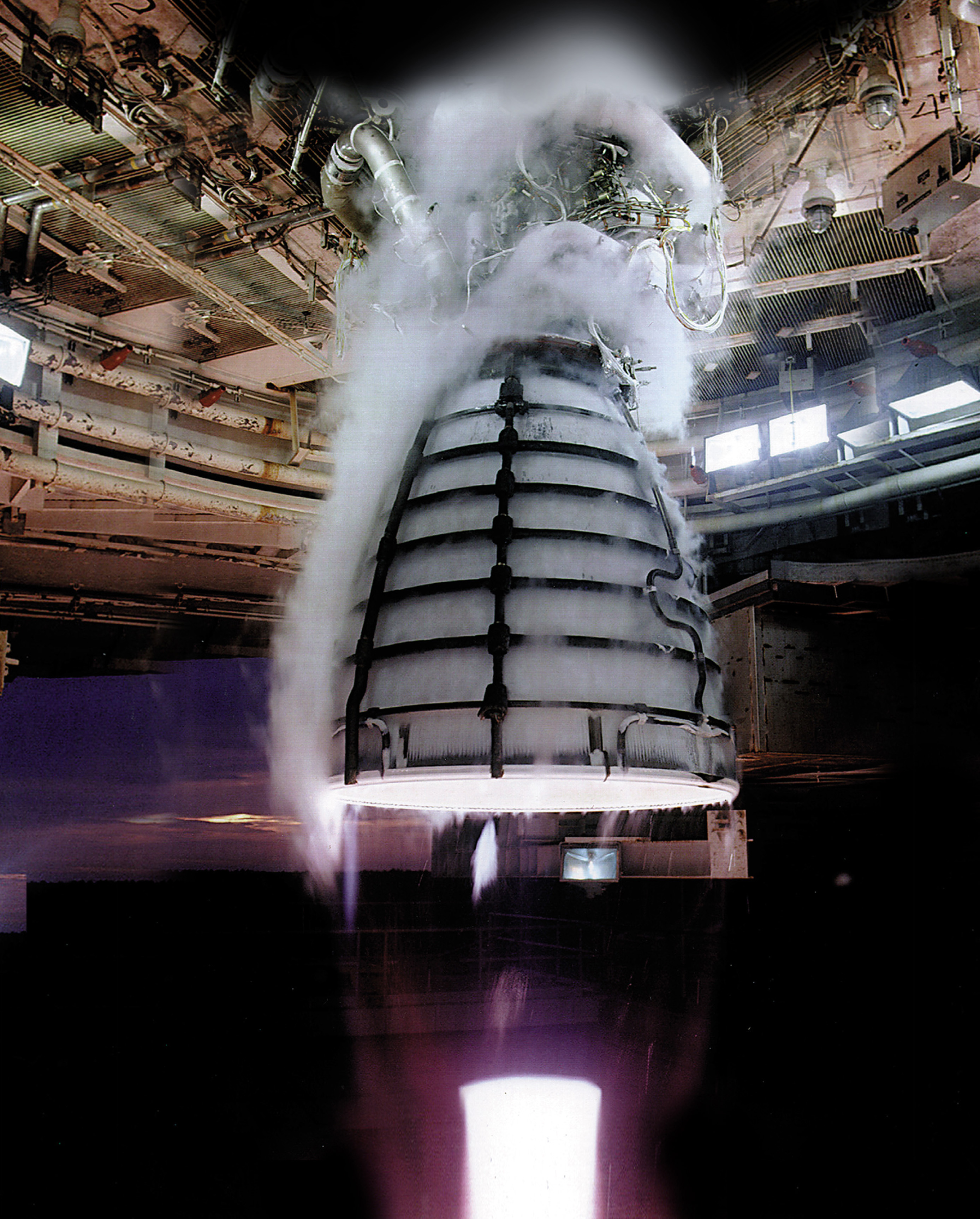
“From inside the cockpit and our engine parameters, it was absolutely no difference” in sensation from the earlier engines, and it worked flawlessly,” noted Kregel in his post-flight remarks. His principal responsibility lay with monitoring the engines and having a brand-new engine was surely a test pilot’s dream on his first shuttle flight. “Once those solids light, it really is a kick in the pants and you know that you’re gonna go someplace,” he recalled of the ascent. “It’s shakin’ a bunch, but it really wasn’t too bad, and thanks to all the people out here, except for the G-forces it felt like I was back in the simulator.”
Primary objective for STS-70 was deployment of NASA’s sixth Tracking and Data Relay Satellite (TDRS-G), a major payload destined for geostationary orbit to relay voice and data communications not only between shuttle astronauts and Mission Control, but also from critical scientific assets including the Hubble Space Telescope (HST) and Compton Gamma Ray Observatory (CGRO). Mounted atop a Boeing-built Inertial Upper Stage (IUS) solid-fueled booster, the satellite “stack” filled 46 feet (14 meters) of Discovery’s 60-foot-long (15-meter) payload bay. Keenly observed by Thomas and Weber, who led the multi-hour deployment effort, the TDRS-G/IUS combo was elevated via a tilt-table from a horizontal position up to an angle of 58 degrees, ahead of release.
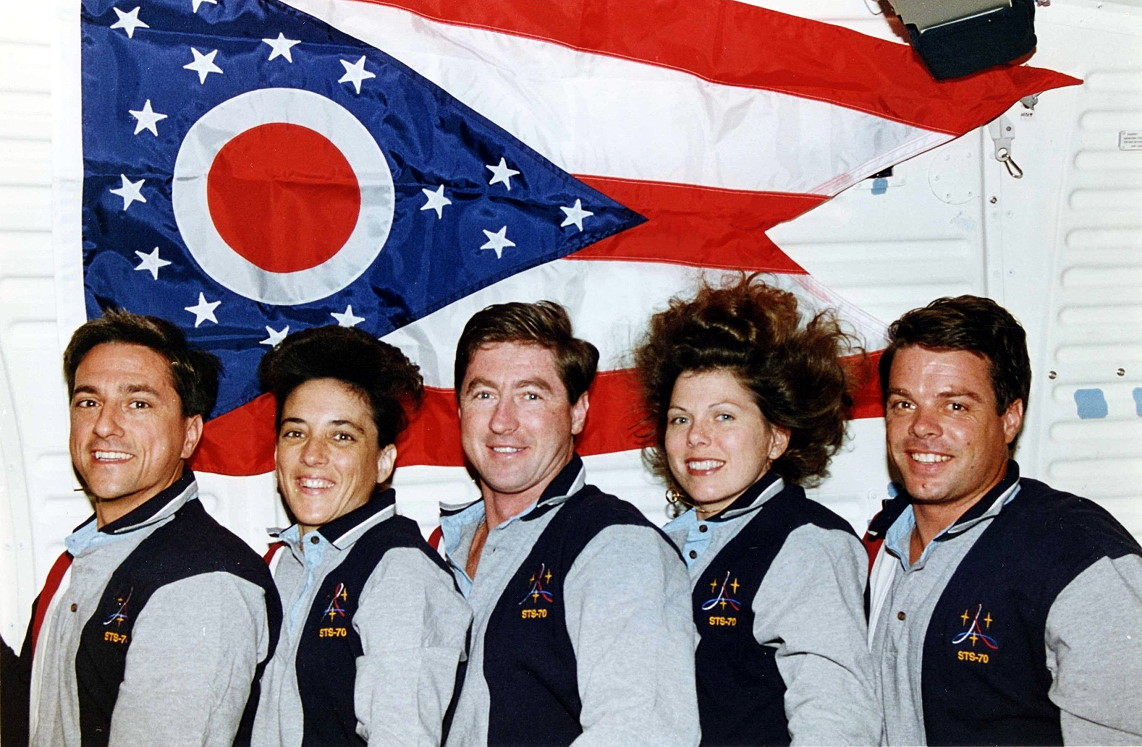
During this process, the payload’s systems underwent exhaustive checkout, the satellite was placed onto IUS internal power and orbiter umbilicals were disconnected. At length, at 3:55 p.m. EDT, a little over six hours into the STS-70 mission, the TDRS-G/IUS stack silently floated away from Discovery and into the darkness. Moving at a rate of only 0.3 feet per second (0.1 meters/sec), its departure was nothing less than serene.
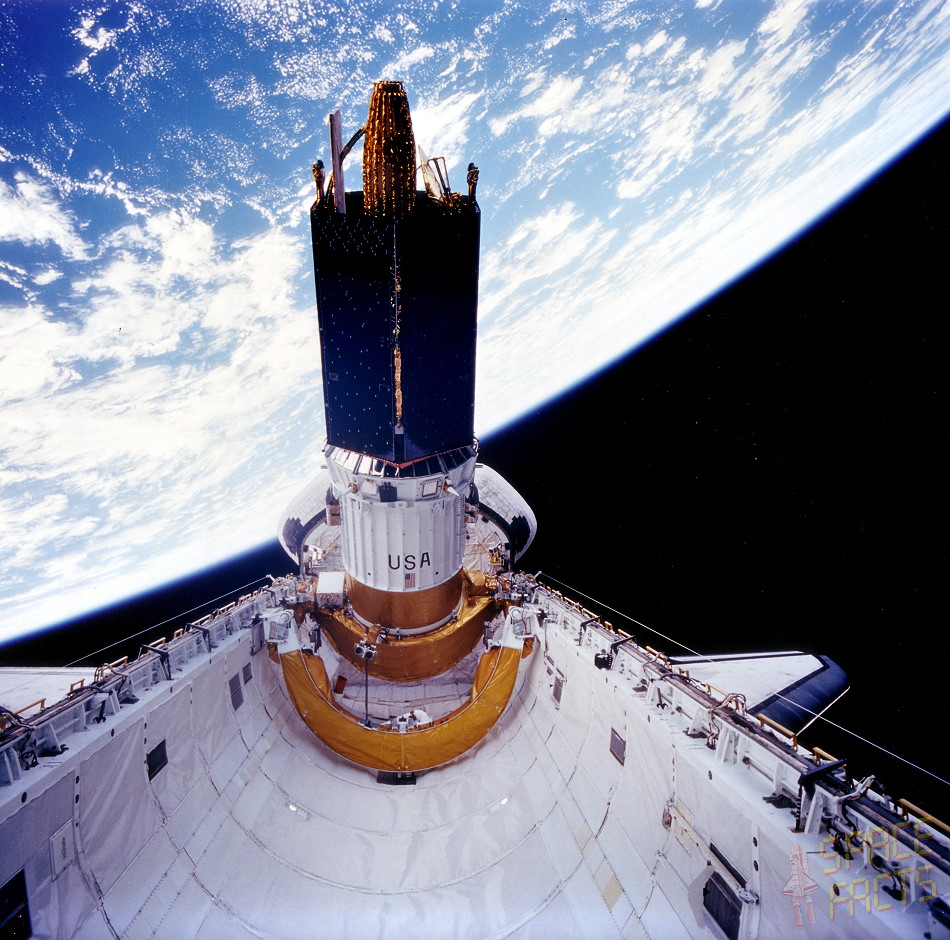
Fifteen minutes later, with the payload clear of them, Henricks and Kregel fired the shuttle’s maneuvering thrusters to achieve a safe distance. And a half-hour after that, the IUS first-stage motor ignited as planned to begin the long climb up to 22,300 miles (35,900 km) geostationary orbit. The satellite was initially positioned at 179.88 degrees West longitude and, with the upper stage booster affording stabilization, TDRS-G unfurled its solar arrays and space-to-ground communications system. When this was done, the IUS separated, executed a collision-avoidance maneuver and deactivated itself. A month after launch, the satellite was in the process of being maneuvered to its operational “slot” at 171 degrees West, high above the central Pacific Ocean, near the Gilbert Islands.
With the main objective of STS-70 done, Mission Control operations at the Johnson Space Center (JSC) in Houston, Texas, were ceremonially transferred down the hall from the Gemini-era control room to the new $500 million White Flight Control Room (FCR). The new room boasted advanced workstations and high-speed computers, supported by 120 miles (195 km) of fiber-optic cables to produce what was touted as the biggest and fastest Local Area Network (LAN) in the world at that time. The new control room assumed command of all STS-70 on-orbit activities, apart from re-entry and landing, which were conducted from the old control room. “From the crew’s perspective, it was totally transparent,” remembered Currie of the transition from old to new, “which was just exceptional.”
And as the crew settled down for their first night’s sleep in orbit on 13 July, they had a busy nine days ahead of them, packed with scientific and biomedical research. But in spite of their success, their past misfortune was not quite done with them. In fact, on the morning of the 14th, it caught up with them in the form of their wake-up music. Thwarted by woodpeckers a month earlier, there could be only one possible wake-up tune to be played by their diabolical instructors: the theme from “Woody Woodpecker” itself.




